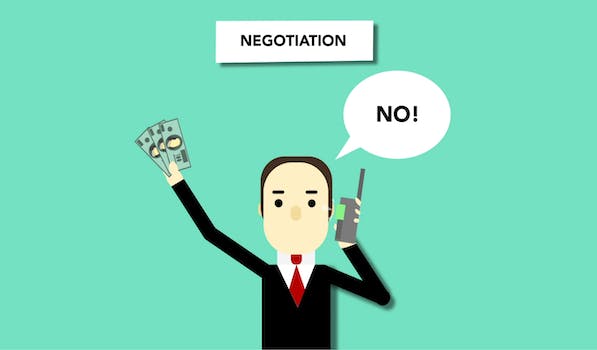How To Start A Business Letter In English
“Craft a professional introduction with these tips for starting a business letter in English.”
Introduction
Starting a business letter in English requires a certain level of formality and professionalism. It is important to make a good first impression and establish credibility with the recipient. The introduction should include the sender’s name, company name, and contact information, as well as the recipient’s name and address. Additionally, it is important to use a proper salutation and to address the recipient by their appropriate title.
Addressing the Recipient: How to Choose the Right Salutation
Starting a business letter in English can be a daunting task, especially if you are not familiar with the language. However, with a little bit of guidance, you can easily master the art of writing a professional and effective business letter. In this article, we will focus on the first step of writing a business letter: addressing the recipient. Specifically, we will discuss how to choose the right salutation.
The salutation is the greeting at the beginning of a letter that addresses the recipient. It is important to choose the right salutation as it sets the tone for the rest of the letter. The salutation should be formal and respectful, but also appropriate for the relationship between the sender and the recipient.
If you know the name of the recipient, it is best to use it in the salutation. This shows that you have taken the time to research and personalize the letter. If you are unsure of the recipient’s gender, it is best to use their full name instead of a gender-specific title such as Mr. or Ms. For example, instead of writing “Dear Mr. Smith,” you can write “Dear Jamie Smith.”
If you are writing to someone with a professional title, such as a doctor or professor, it is important to use their title in the salutation. For example, you can write “Dear Dr. Johnson” or “Dear Professor Lee.” If the recipient has multiple titles, such as a doctor who is also a professor, it is best to use the title that is most relevant to the context of the letter.
If you do not know the name of the recipient, you can use a generic salutation such as “Dear Sir or Madam” or “To Whom It May Concern.” However, it is best to avoid these generic salutations if possible, as they can come across as impersonal and unprofessional.
In some cases, you may be writing to a group of people instead of an individual. In this case, you can use a collective salutation such as “Dear Members of the Board” or “Dear Team.” It is important to make sure that the salutation is appropriate for the group you are addressing and that it includes everyone who should be included.
If you are writing to someone who you have a close relationship with, such as a colleague or friend, you can use a more informal salutation such as “Dear John” or “Hi Sarah.” However, it is important to make sure that the level of informality is appropriate for the context of the letter and the relationship between the sender and the recipient.
In conclusion, choosing the right salutation is an important part of starting a business letter in English. It sets the tone for the rest of the letter and shows respect for the recipient. When choosing a salutation, it is important to consider the relationship between the sender and the recipient, the recipient’s professional title, and the context of the letter. By following these guidelines, you can ensure that your business letter starts off on the right foot.
Introduction: How to Start with a Strong Opening Statement

Starting a business letter in English can be a daunting task, especially if you are not a native speaker. However, it is important to remember that the opening statement sets the tone for the entire letter. A strong opening statement can grab the reader’s attention and make them want to continue reading. In this article, we will discuss some tips on how to start a business letter in English with a strong opening statement.
Firstly, it is important to address the recipient of the letter correctly. If you know the name of the person you are writing to, use their full name and title. For example, “Dear Mr. John Smith,” or “Dear Dr. Jane Doe.” If you do not know the name of the person, use a generic greeting such as “Dear Sir/Madam” or “To Whom It May Concern.”
Next, it is important to introduce yourself and your company. This can be done in a brief sentence or two. For example, “My name is John Doe, and I am the CEO of XYZ Company.” This lets the recipient know who you are and why you are writing to them.
After introducing yourself, it is important to state the purpose of the letter. This can be done in a clear and concise sentence. For example, “I am writing to inquire about your company’s services.” This lets the recipient know what the letter is about and what they can expect to read in the rest of the letter.
It is also important to show enthusiasm and interest in the recipient’s company or services. This can be done by complimenting their work or expressing a desire to work with them. For example, “I have heard great things about your company and would love to learn more about your services.” This shows that you have done your research and are genuinely interested in what they have to offer.
Another tip for starting a business letter in English is to use a hook. A hook is a statement or question that grabs the reader’s attention and makes them want to continue reading. For example, “Did you know that your company’s services could save us thousands of dollars?” This shows that you have done your research and are interested in what they have to offer.
Finally, it is important to be professional and polite throughout the letter. This includes using proper grammar and spelling, avoiding slang or informal language, and thanking the recipient for their time and consideration. For example, “Thank you for taking the time to read my letter. I look forward to hearing back from you soon.”
In conclusion, starting a business letter in English with a strong opening statement is important for grabbing the reader’s attention and setting the tone for the rest of the letter. By addressing the recipient correctly, introducing yourself and your company, stating the purpose of the letter, showing enthusiasm and interest, using a hook, and being professional and polite, you can create a strong opening statement that will make the recipient want to continue reading.
Purpose: How to Clearly State the Reason for Writing
Starting a business letter in English can be a daunting task, especially if you are not a native speaker. However, it is essential to get it right as the opening sets the tone for the rest of the letter. The first step in writing a business letter is to clearly state the reason for writing. In this article, we will discuss how to do this effectively.
The first thing to consider is the recipient of the letter. Is it a potential client, a colleague, or a superior? Knowing your audience will help you tailor your message appropriately. For example, if you are writing to a potential client, you may want to start with a brief introduction of yourself and your company. On the other hand, if you are writing to a colleague, you may want to skip the introduction and get straight to the point.
Once you have identified your audience, it is time to think about the purpose of your letter. Are you requesting information, making a complaint, or offering a proposal? Whatever the reason, it is important to state it clearly in the opening sentence or two. This will help the reader understand the context of the letter and what you are hoping to achieve.
One way to do this is to use a direct approach. For example, you could start with a sentence like “I am writing to request information about your products and services.” This clearly states the reason for writing and sets the tone for the rest of the letter. Alternatively, you could use a more indirect approach, such as “I hope this letter finds you well. I am writing to inquire about the possibility of working together.” This approach is more formal and may be more appropriate for certain situations.
Another important consideration when starting a business letter is the tone of the message. Are you writing a formal letter or an informal one? The tone of the letter will depend on the purpose and the recipient. For example, if you are writing to a potential client, you may want to use a more formal tone to convey professionalism and respect. On the other hand, if you are writing to a colleague, you may want to use a more informal tone to build rapport and establish a friendly relationship.
Regardless of the tone, it is important to be clear and concise in your opening sentence. Avoid using jargon or technical terms that the reader may not understand. Instead, use simple language that is easy to understand. This will help the reader quickly grasp the purpose of the letter and what you are hoping to achieve.
In addition to stating the reason for writing, it is also important to provide some context for the reader. This could include a brief introduction of yourself or your company, or a reference to a previous conversation or meeting. Providing context will help the reader understand why you are writing and what you hope to achieve.
Finally, it is important to be polite and courteous in your opening sentence. This will help establish a positive tone for the rest of the letter and show the reader that you value their time and attention. For example, you could start with a sentence like “I hope this letter finds you well. I would like to take this opportunity to introduce myself and my company.” This shows that you are respectful and professional, and sets the tone for a productive and positive conversation.
In conclusion, starting a business letter in English can be challenging, but it is essential to get it right. Clearly stating the reason for writing is the first step in establishing a positive tone and building a productive relationship with the reader. By considering your audience, purpose, tone, and context, you can craft an opening sentence that is clear, concise, and courteous. With practice and patience, you can master the art of starting a business letter in English and achieve your communication goals.
Body: How to Organize and Present Information Effectively
Starting a business letter in English can be a daunting task, especially if you are not familiar with the language. However, with a few simple tips and tricks, you can easily master the art of writing a professional and effective business letter in English.
Firstly, it is important to understand the purpose of the letter. Are you writing to introduce yourself or your company? Are you requesting information or making a complaint? Knowing the purpose of the letter will help you determine the appropriate tone and language to use.
Once you have identified the purpose of the letter, it is time to start writing. The first thing to consider is the salutation. This is the greeting at the beginning of the letter, and it is important to get it right. If you know the name of the person you are writing to, use their full name and title (e.g. Dear Mr. Smith). If you do not know their name, use a generic salutation such as “Dear Sir/Madam” or “To Whom It May Concern”.
After the salutation, it is time to introduce yourself or your company. This should be a brief paragraph that provides some background information and sets the tone for the rest of the letter. Be sure to include your name, job title, and any relevant information about your company.
Next, it is time to get to the heart of the matter. This is where you state the purpose of the letter and provide any necessary details or information. It is important to be clear and concise, and to avoid using overly technical language or jargon that the reader may not understand.
If you are making a request or asking for information, be sure to be polite and courteous. Use phrases such as “I would be grateful if you could” or “Could you please provide me with”. This will help to establish a positive tone and increase the likelihood of a favorable response.
If you are making a complaint or expressing dissatisfaction, it is important to be firm but polite. Avoid using aggressive or confrontational language, as this is likely to put the reader on the defensive and make it more difficult to resolve the issue.
Finally, it is important to close the letter in a professional and courteous manner. Use a closing phrase such as “Yours sincerely” or “Best regards”, followed by your name and job title. If you are including any attachments or additional information, be sure to mention this in the closing paragraph.
In summary, starting a business letter in English can be a challenge, but with a little practice and attention to detail, it is possible to write a professional and effective letter that will get results. Remember to identify the purpose of the letter, use an appropriate salutation, introduce yourself or your company, state the purpose of the letter clearly and concisely, be polite and courteous, and close the letter in a professional manner. With these tips in mind, you will be well on your way to writing successful business letters in English.
Closing: How to End with a Professional and Polite Tone
When it comes to writing a business letter in English, it’s important to start off on the right foot. The opening of your letter sets the tone for the entire message, so it’s crucial to make a good impression from the very beginning. In this article, we’ll discuss some tips for starting a business letter in English that will help you convey your message clearly and professionally.
First and foremost, it’s important to address your recipient properly. If you know the person’s name, use it. Begin your letter with “Dear Mr./Ms. Last Name” or “Dear First Name Last Name” if you have a more informal relationship with the recipient. If you don’t know the person’s name, use a generic greeting such as “Dear Sir/Madam” or “To Whom It May Concern.” However, it’s always best to try to find out the person’s name if possible.
After addressing your recipient, it’s time to introduce yourself and state the purpose of your letter. This should be done in a clear and concise manner. Start by stating your name and your position or company name if applicable. Then, briefly explain why you are writing the letter. For example, “I am writing to inquire about your company’s services” or “I am writing to follow up on our previous conversation regarding the project.”
Once you’ve introduced yourself and stated the purpose of your letter, it’s time to provide some context or background information. This can help the recipient understand why you are writing and what you hope to achieve. For example, if you are requesting a meeting, you might explain why the meeting is necessary and what topics will be discussed. If you are making a complaint, you might provide some details about the issue and any previous attempts to resolve it.
As you write your opening paragraph, keep in mind that you want to grab the reader’s attention and make them want to keep reading. Avoid using overly formal or stiff language, as this can make your letter seem impersonal. Instead, try to use language that is clear, concise, and easy to understand. Use active verbs and avoid using passive voice whenever possible.
Finally, it’s important to end your letter with a professional and polite tone. This can help leave a positive impression on the recipient and increase the chances of a favorable response. One way to do this is to express gratitude or appreciation for the recipient’s time and attention. For example, you might end your letter by saying “Thank you for considering my request” or “I appreciate your prompt attention to this matter.”
Another way to end your letter on a positive note is to offer some kind of follow-up or next steps. This can help keep the conversation going and show that you are committed to achieving your goals. For example, you might say “I look forward to hearing from you soon” or “I will follow up with you next week to discuss this further.”
In conclusion, starting a business letter in English can be a daunting task, but it doesn’t have to be. By following these tips, you can create an opening that is clear, concise, and professional. Remember to address your recipient properly, introduce yourself and state the purpose of your letter, provide some context or background information, and end with a professional and polite tone. With a little practice, you’ll be writing effective business letters in no time.
Conclusion
To start a business letter in English, it is important to include the date, recipient’s name and address, a formal greeting, and an introduction that clearly states the purpose of the letter. The tone should be professional and courteous, and the letter should be formatted in a clear and organized manner. By following these guidelines, you can create a strong and effective business letter that will make a positive impression on your recipient.






